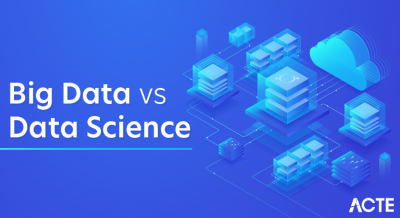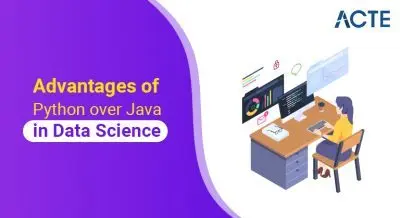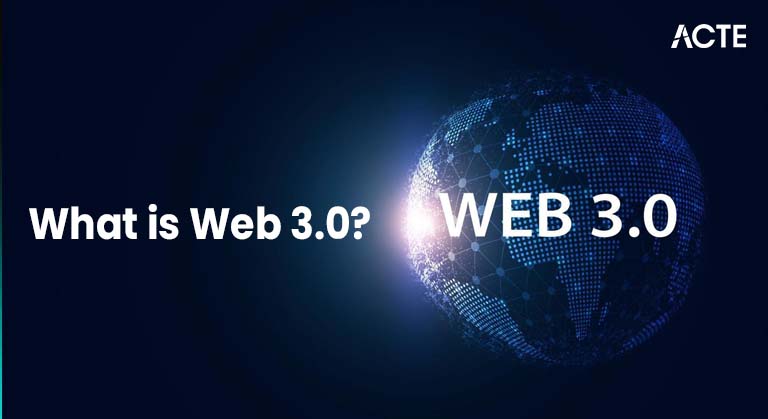
- Introduction to Web 3.0
- Evolution of the Web: From Web 1.0 to Web 3.0
- Key Characteristics of Web 3.0
- Technologies Powering Web 3.0
- Decentralization and Its Importance in Web 3.0
- Applications and Use Cases of Web 3.0
- Challenges and Criticisms of Web 3.0
- The Future of Web 3.0 and What to Expect
- Conclusion
Introduction to Web 3.0
The internet has been a transformative force in human history, evolving over decades to become an essential part of daily life. The concept of Web 3.0 refers to the next generation of the internet, facilitate digital transactions, which aims to be more intelligent, decentralized, Importance in Web 3.0 and user-focused compared to its predecessors. Web 3.0, sometimes called the Semantic Web or Decentralized Web, promises to reshape how we interact with online data, applications, and each other. It strives to create a more open, trustless, Key Characteristics of Web 3.0 and permissionless internet ecosystem where users control their own data and participate more directly in the digital economy. But what exactly is Web 3.0? How is it different from the internet we use today? Let’s dive deeper to understand this emerging paradigm.
Are You Interested in Learning More About Database? Sign Up For Our Database Online Training Today!
Evolution of the Web: From Web 1.0 to Web 3.0
Web 1.0: The Static Web (1990s – early 2000s)
The first iteration of the internet was primarily read-only. Web 1.0 consisted of static websites where users could only view information but had limited interaction or content creation capabilities. Websites were simple HTML pages with hyperlinks, Importance in Web 3.0, no real user-generated content, and limited connectivity.
Web 2.0: The Social Web (mid 2000s – present)
Web 2.0 brought dynamic, interactive websites and platforms. This era is marked by user-generated content, facilitate digital transactions, social media, blogs, and collaborative platforms. Users became creators, sharing their thoughts, videos, and photos on sites like Facebook, YouTube, and Twitter. However, Web 2.0 also centralized data control in the hands of large corporations, raising concerns about privacy, data security, and censorship. Most user data is stored on centralized servers owned by tech giants.
Web 3.0: The Decentralized Web (Emerging Era)
Web 3.0 envisions a read-write-execute web where applications are decentralized, powered by blockchain, artificial intelligence, and peer-to-peer networks. Users regain ownership of their data, and trust is established without relying on central authorities. This next-gen internet aims to be smarter, more secure, and more inclusive by leveraging technologies like decentralized ledgers, smart contracts, and machine learning.
Key Characteristics of Web 3.0
Key Characteristics of Web 3.0 is defined by several core features that differentiate it from earlier web versions:
- Unlike Web 2.0, where data and applications are hosted on centralized servers, Web 3.0 distributes data across networks of computers, reducing dependence on any single entity.
- Web 3.0 incorporates semantic technologies that help machines understand the meaning and context of data, enabling more accurate and relevant information retrieval.
- Users don’t need to trust a central authority to interact or transact. Blockchain and cryptographic protocols enable secure, Importance in Web 3.0, transparent, and verifiable interactions.
- These technologies enable Web 3.0 to offer smarter services by analyzing vast amounts of data and learning user preferences to provide personalized experiences.
- Web 3.0 promotes seamless integration and communication between different platforms and applications through open standards.
- Users control their digital identities and data, deciding who can access or use their information.
- Blockchain: At the heart of Web 3.0 is blockchain technology, a decentralized and immutable ledger that records transactions and data across a network of computers. Blockchain eliminates intermediaries, Key Characteristics of Web 3.0 ensuring transparency and trust.
- Decentralized Storage: vSolutions like IPFS (InterPlanetary File System) store data in a distributed manner rather than on centralized servers, making the web more resilient and censorship-resistant.
- Smart Contracts: Self-executing contracts with the terms directly written into code, running on blockchain networks. They automate agreements and reduce the need for middlemen.
- Cryptography: Advanced cryptographic techniques ensure secure communication, data privacy, and identity verification.
- Artificial Intelligence and Natural Language Processing: AI helps interpret and connect data in meaningful ways, making the web smarter and more intuitive.
- Decentralized Autonomous Organizations (DAOs): These are organizations governed by code and community consensus rather than centralized leadership, facilitating decentralized decision-making.
- WebAssembly (Wasm): A binary instruction format for a stack-based virtual machine that allows high-performance applications to run inside web browsers, crucial for running decentralized apps (dApps).
- Data breaches and privacy violations
- Platform censorship and content control
- Single points of failure leading to outages
- Distributing data and control across many nodes, making systems more resilient
- Giving users ownership of their data and identity
- Enabling peer-to-peer interactions without intermediaries
- Ensuring censorship resistance and freedom of expression
- Decentralized Finance (DeFi): Financial services like lending, borrowing, trading, and insurance on blockchain networks without traditional banks.
- Decentralized Social Networks: Platforms where users own their data and content, reducing censorship and monetizing participation directly.
- Non-Fungible Tokens (NFTs): Digital assets that prove ownership and authenticity of art, music, collectibles, and virtual goods.
- Supply Chain Transparency: Tracking goods on a blockchain to enhance transparency, authenticity, and reduce fraud.
- Decentralized Marketplaces: Platforms where users trade goods or services directly without intermediaries.
- Identity Management: Self-sovereign identity systems where users control their digital identity and selectively share data.
- Healthcare: Secure sharing of medical records and data across providers, improving patient outcomes and privacy.
- Gaming and Metaverse: Immersive virtual worlds with digital ownership, economy, and social interactions powered by Web 3.0 tech.
- Scalability: Decentralized networks currently face performance bottlenecks, making mass adoption challenging.
- Usability: Many Web 3.0 apps have steep learning curves, limiting mainstream appeal.
- Regulatory Uncertainty: Governments are still figuring out how to regulate decentralized systems and cryptocurrencies.
- Energy Consumption: Some blockchain networks consume significant energy, raising environmental concerns.
- Fragmentation: The ecosystem is still fragmented, with many competing protocols and standards.
- Security Risks: While blockchain is secure, smart contract bugs and exploits have led to losses.
- Overhyped Expectations: Some critics argue Web 3.0 is still more hype than reality and lacks clear user benefits yet.
- Improved scalability solutions like Layer 2 blockchains and sharding
- More intuitive user interfaces making Web 3.0 accessible
- Greater adoption of decentralized identity and data ownership models
- Integration with IoT and AI for smarter, interconnected applications
- Increasing regulatory clarity balancing innovation and protection
- Expansion of decentralized economies through DeFi, NFTs, and tokenization
- Continued experimentation with DAOs redefining governance and collaboration
Decentralization
Semantic Web
Trustless and Permissionless
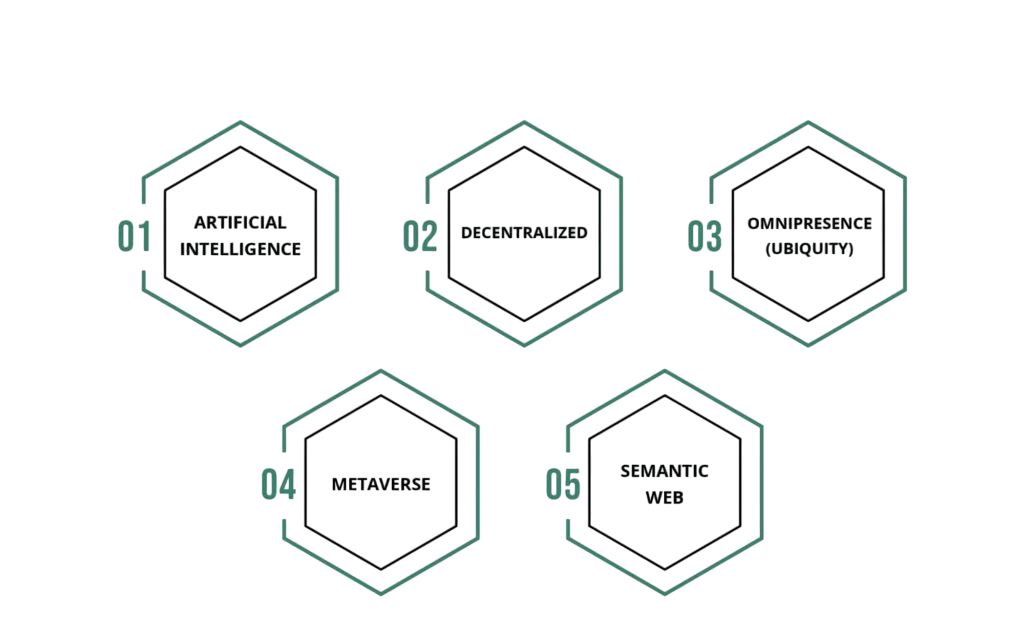
Artificial Intelligence (AI) and Machine Learning (ML)
Interoperability
User Sovereignty and Data Ownership
To Explore Database in Depth, Check Out Our Comprehensive Database Online Training To Gain Insights From Our Experts!
Technologies Powering Web 3.0
Decentralization and Its Importance in Web 3.0
Centralization in Web 2.0 has led to issues like:
Decentralization addresses these by:
Applications and Use Cases of Web 3.0
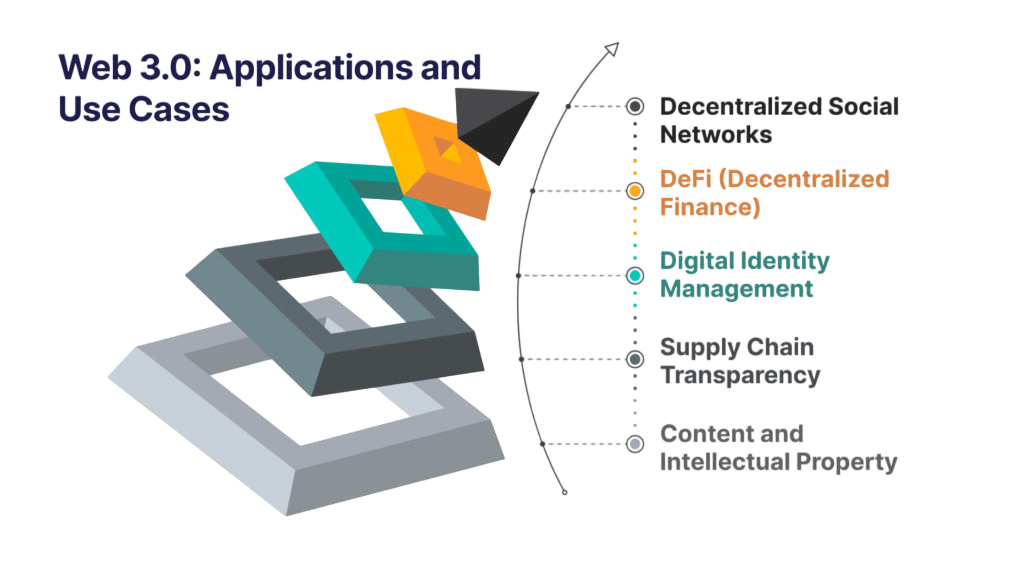
Challenges and Criticisms of Web 3.0
The Future of Web 3.0 and What to Expect
Web 3.0 is still evolving, but the momentum is undeniable. Web 3.0 could redefine the internet by empowering individuals, fostering innovation, and creating a more equitable digital ecosystem. As users and developers embrace these new paradigms, facilitate digital transactions, the internet’s future will become more transparent, intelligent, and democratic.
Over the next decade, we can expect:
Want to Learn About Database? Explore Our Database Interview Questions and Answers Featuring the Most Frequently Asked Questions in Job Interviews.
Conclusion
Web 3.0 is not just a technological upgrade; it represents a shift in how the internet operates and how power is distributed online. By combining decentralization, AI, Importance in Web 3.0, facilitate digital transactions, Scalability and blockchain, Cryptographic Web 3.0 aims to build a more trustworthy and user-centric web. While challenges remain, its potential to revolutionize everything from finance to social networks makes it one of the most exciting developments of our digital age.


